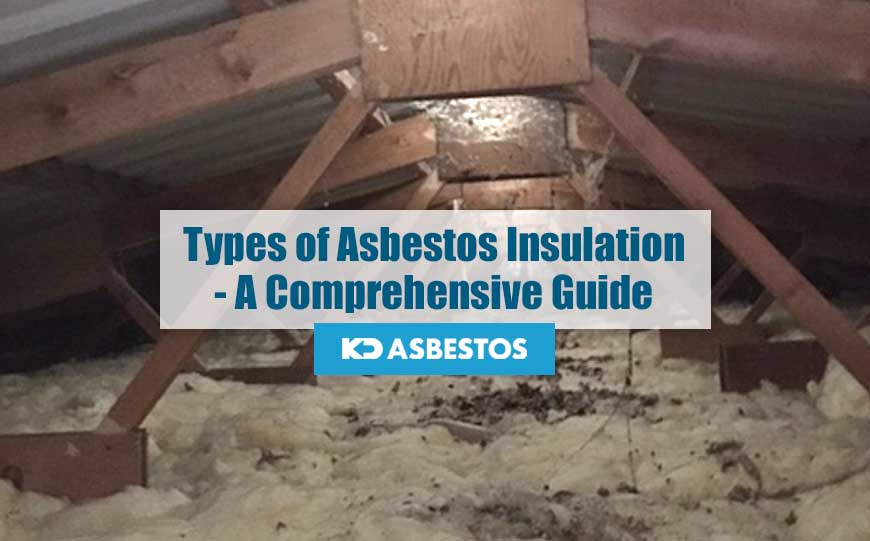
The dangers associated with asbestos are well known.
From being a breathing irritant, to the fact that it can lead to mesothelioma, we are well aware of the importance of knowing how to deal with asbestos containing materials.
In older homes there is a possibility that asbestos is present in all sorts of things, from roof shingles, to pipe insulation, to floor adhesive.
Here we shall be focusing on asbestos insulation, and key aspects relating to it.
Table of Contents
What is Asbestos?
Asbestos is a naturally occurring mineral.
It has a fibrous nature, and it is highly resistant to heat.
Asbestos is also fireproof, and able to resist chemical corrosion.
Due to its attributes, asbestos was commonly mixed with other materials to make them more resistant.
Manufacturers used to mix it with cement, paper, fabric and spray-on coatings, and consequently there were several products that ended up containing asbestos.
Also, whenever insulation was produced in the past, it was generally the norm to have asbestos as part of its compound.
In fact, insulators were generally referred to as asbestos workers for the better part of the 20th century, as they had to deal with asbestos so often.
Fortunately, asbestos was banned officially on the 24th August 1999.
Types of Insulation
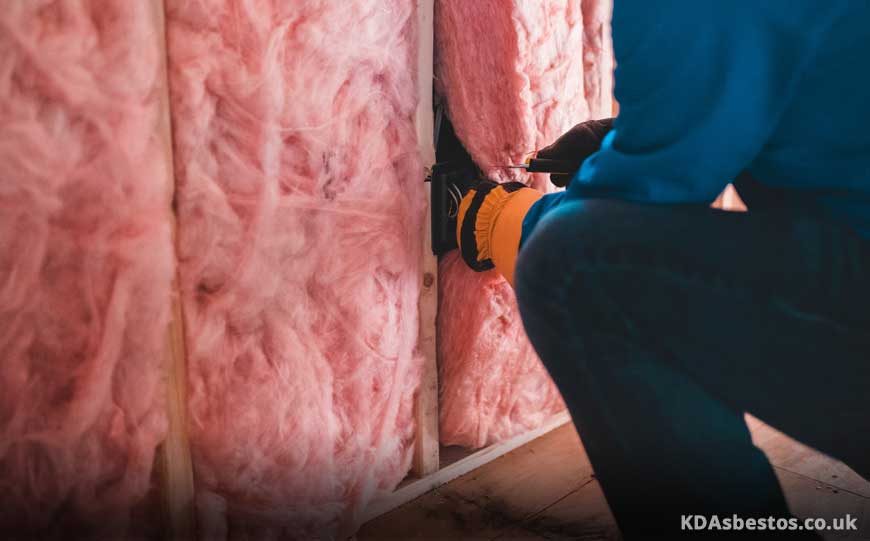
The use of asbestos in insulation increased considerably over the years as the demand for asbestos grew.
It was used for steam engine linings, boilers, pipes that needed to withstand high temperatures etc.
It was also widely used for military purposes, and for construction.
Until the ban on the use of asbestos was introduced towards the end of the last century, there were various kinds of asbestos insulation present in all sorts of materials and objects.
There are in fact the following main types of asbestos containing thermal insulation, as we shall describe in more detail hereunder.
Loose-Fill Asbestos Insulation
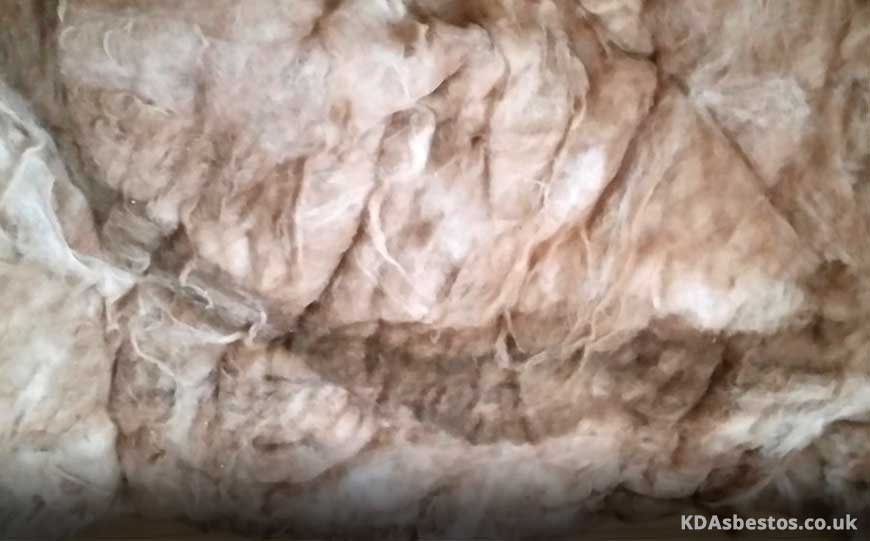
Loose fill insulation, or as it is sometimes called, blown-in insulation, comes in a range of materials.
Loose-fill asbestos insulation is somewhat granular and fluffy in nature and it contains a very high percentage of asbestos.
Sometimes this type of insulation is almost entirely made up of asbestos, and hence the level of toxicity is extremely high.
This is because such a material can easily lead to inhalation of asbestos fibres in the air even with a slight current.
Vermiculite Insulation
Vermiculite loose-fill insulation is one of the most common materials containing asbestos.
It commonly has a silvery gold or greyish brown colour, and it is mined from the earth.
It is made from a natural mineral material that expands when heated.
It has a pebble-like look, and the particles are stony in texture and form when it is used for insulation purposes.
Cellulose Insulation
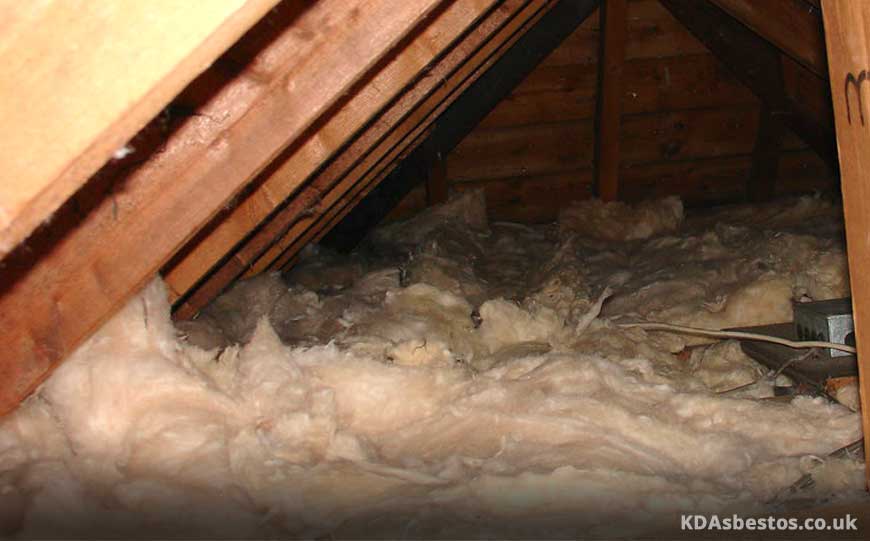
If the insulation is greyish and quite soft, it is most probably cellulose insulation.
This type of insulation contains recycled paper, and that is why it looks grey.
There are no minerals in it, and it comes in batt and blanket forms.
It is a safe type of insulation.
Loose-Fill Fibreglass
This type of insulation is a little shiny, and it is whitish and quite fluffy in texture.
This is essentially a glass product and it is made up of fine fibres and quite soft.
Fibreglass is relatively safe if handled with care.
However it can cause skin irritation, respiratory problems and other health problems too.
Rock Wool Insulation
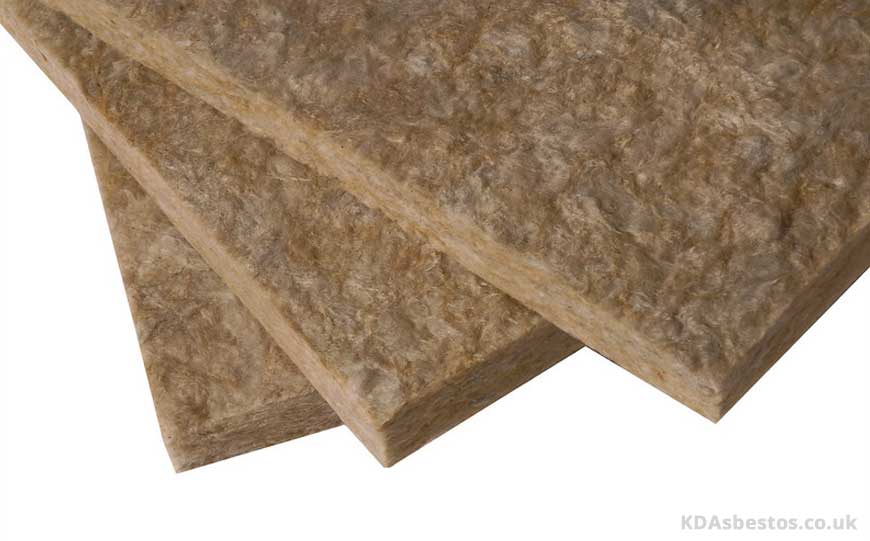
Rock Wool is a soft, cottony material.
It is a type of loose fill insulation which is mineral based.
ts colour varies from grey to white or slightly brownish white.
It is composed of melted basaltic rock and dolomite, and a number of additives.
It is then heated to very high temperatures until it melts and can be spun in fibres by means of air pressure.
Rock Wool is used as loose insulation and it is commonly used as woven insulation batts.
It should be handled with care despite the fact that it is not considered to contain high levels of asbestos, unlike other kinds of insulation.
Asbestos Insulation Wrappings
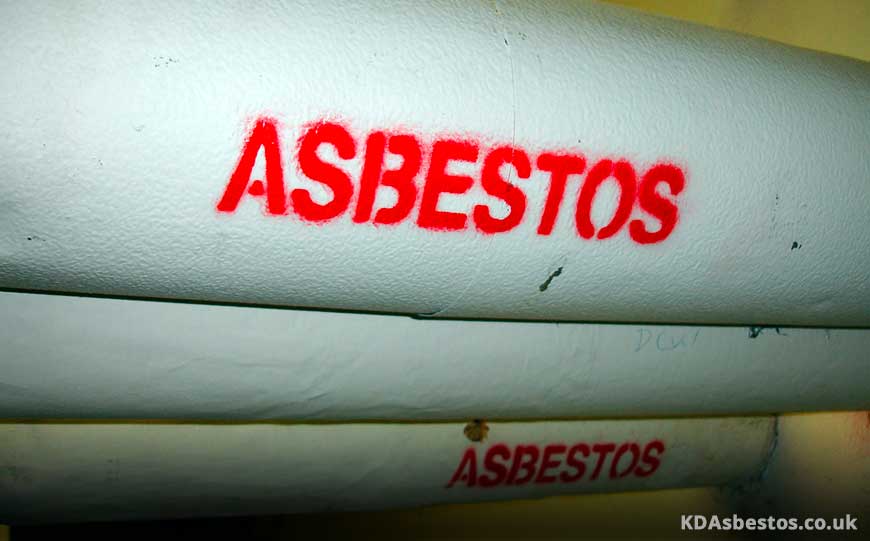
Asbestos insulation wrappings consist of the coverings for ducts, pipes and other plumbing components.
These used to be commonly used in old buildings, both for plumbing as well as for HVAC systems.
Asbestos pipe insulation is considered to be one of the main health hazards.
Prior to the 1980s insulators consisted of pipes wrapped with asbestos based air-cell insulation.
This deteriorates easily over time as it crumbles, and consequently asbestos fibres are released or dispersed.
Asbestos Block Insulation
Insulation blocks used to be made from asbestos.
It was used practically in its purest form, and thus asbestos block insulation is a highly hazardous type of insulation.
Very high levels of asbestos can be released in cases where blocks are sawed, cut or damaged in any way, so are considered dangerous.
Spray-On Insulation
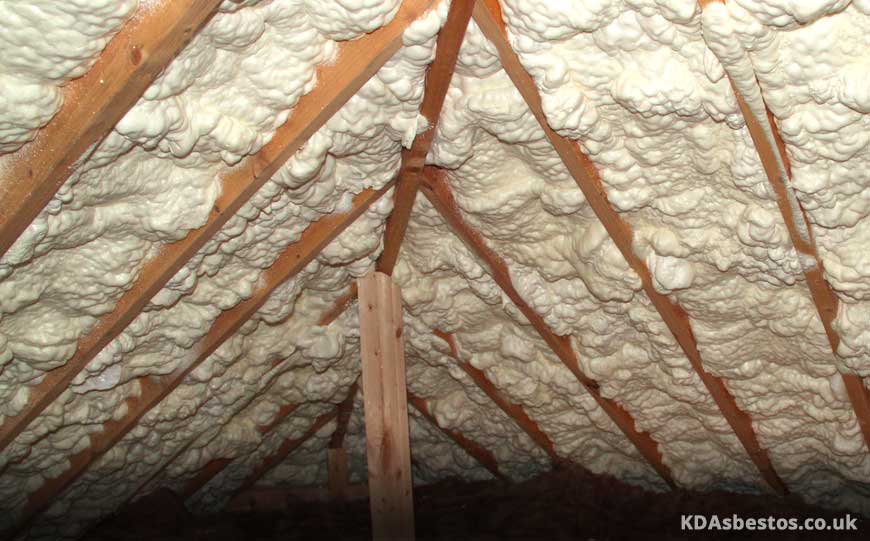
Spray-on insulation was commonly applied on ceilings and walls, as well as beams.
It is considered as a more flexible way of applying insulation, and is often used in large commercial establishments.
The problem is that most spray-on insulation products used to contain a considerable percentage of asbestos.
Moreover, this type of insulation can easily be damaged, thus ending up releasing asbestos fibres in the air.
After 1990 the manufacturers of spray-on insulation products started to be more regulated to ensure that anything in excess of 1% asbestos was prohibited, unless encapsulation was carried out.
Why is Asbestos Insulation Dangerous?
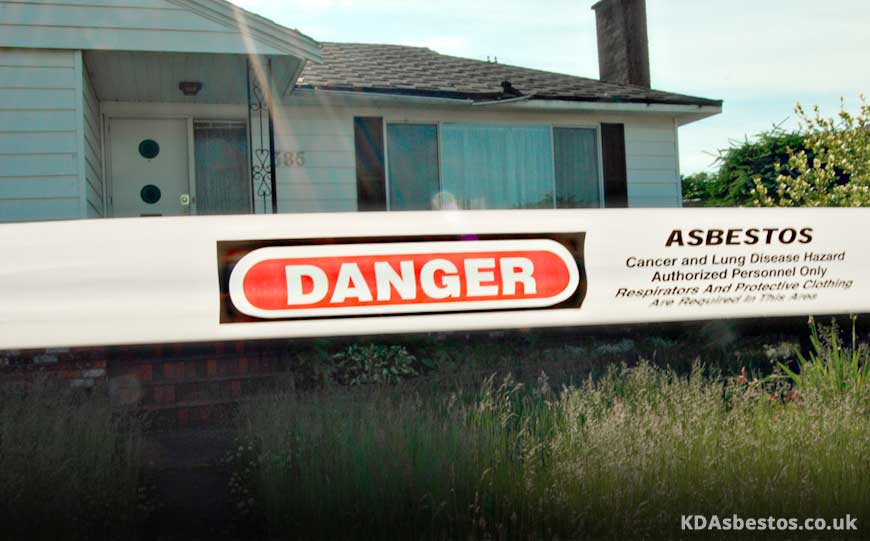
Asbestos can lead to a variety of health problems.
The most serious ones are asbestosis and mesothelioma.
When the asbestos fibres accumulate in the lungs after consistent inhalation, they end up remaining there as the human body is neither able to break them down nor expel them.
Over several years these mineral fibres end up causing various serious problems such as inflammation, scarring as well as genetic damage to the cells.
Unfortunately there were many people who worked in factories that produced asbestos.
These include insulation products, shipbuilders and those who worked in the construction industry, who were continuously exposed to asbestos during their work.
These people handled crumbling asbestos pipe wrapping, sawed on asbestos blocks, sprayed asbestos insulation on walls and ceilings, poured loose-fill asbestos, and much more.
It is a sad fact, but these workers were victims of the dangerous asbestos dust that was released in the air whenever such activities were carried out.
This led to health problems and in many cases, fatalities.
Besides these workers, there are also people who are still living in old houses, and employees who work in old commercial buildings.
If there is asbestos insulation in these buildings and houses, and if it gets disturbed due to wear and tear or renovations and maintenance, then asbestos fibres will be released into the atmosphere.
Whoever lives or works in such places is thus endangered unless necessary precautions and measures are taken to safeguard their health.
What To Do With Suspect Insulation
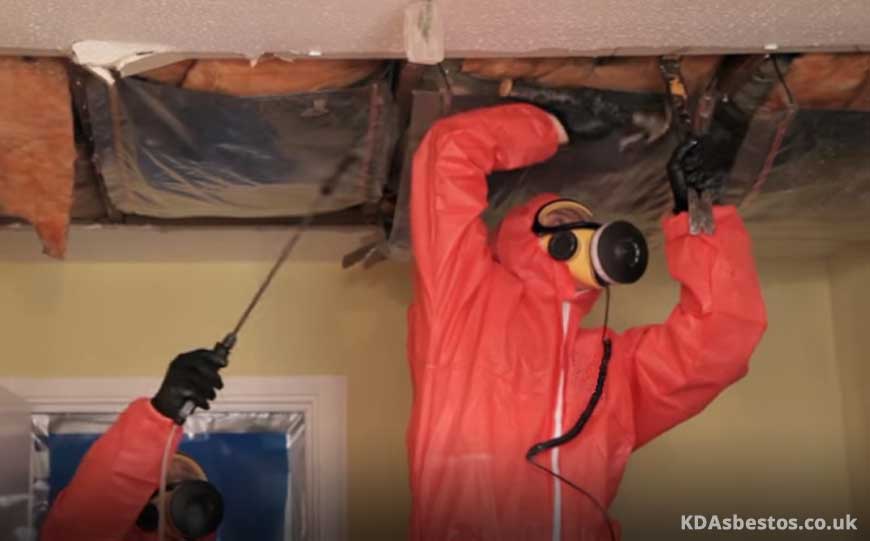
We all know how dangerous asbestos is.
Therefore no chances should be taken if there is even the slightest suspicion that it might be present in insulation materials.
Asbestos fibres are most dangerous if they are airborne and persons in the area inhale them.
Hence if insulation is not disturbed, or does not appear to be in a deteriorating condition, there is no need to worry about it.
However if you plan to have renovations or works carried out, and there’s the considerable probability for the insulation to be damaged, then you should not risk it as you can end up getting exposed to the asbestos fibres.
Hence, insulation should be tested for asbestos to make sure whether there is indeed any asbestos present.
There are kits available that can be used for asbestos testing.
In case the results show that there is asbestos in the insulation, you need to leave it in place and make sure to contact an asbestos specialist company to deal with its safe removal and disposal.
This is especially important in case of vermiculite insulation.
Conclusion
Whilst a visual inspection and having knowledge of the year when any suspect insulation was installed, it’s always best to play it safe and test any suspect material before carrying out any work on or around it.
Any potentially hazardous insulation should be left in the hands of a professional asbestos company as it is highly risky and dangerous.